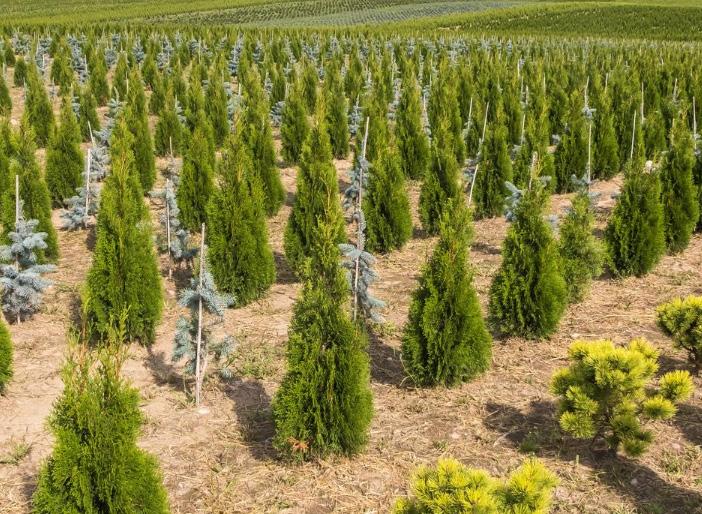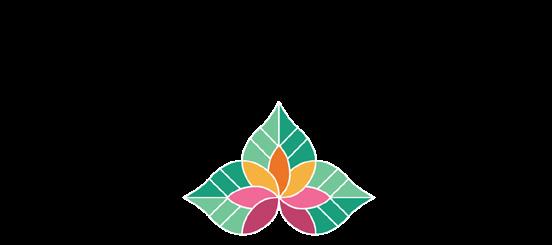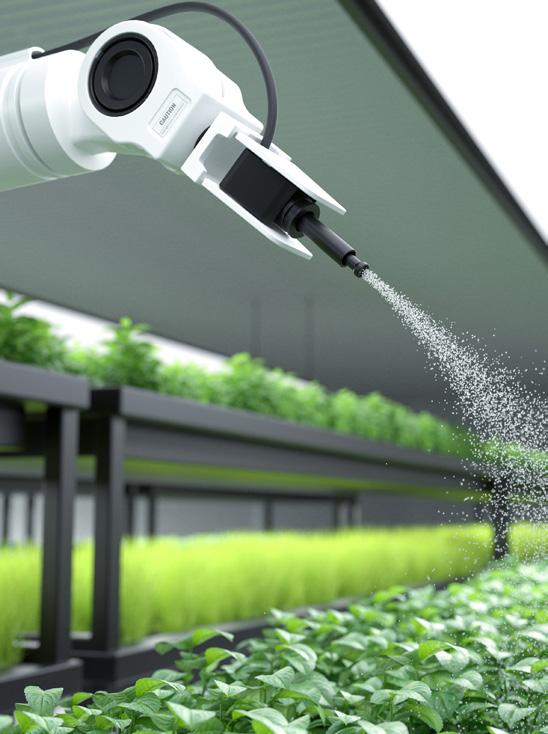BUSINESS RISK MANAGEMENT WORKS WHEN EVERY SECTOR CAN MANAGE ITS UNIQUE RISKS
ISSUE:
Canadian ornamental horticulture producers face unique risks related to production methods, cost structures, seasonality, extreme weather, and market dynamics that are not properly addressed by current Government of Canada business risk management (BRM) programs. This has left the sector at a competitive disadvantage that is hindering the viability and growth of many ornamental growers. If enhanced, these Agriculture and Agri-Food Canada (AAFC) programs can provide them with meaningful safety nets in times of natural disaster and major market disruptions.
CHALLENGES:
• The size of many Canadian ornamental horticulture operations (especially floriculture and nursery) now exceed the $3 million dollar cap put in place for the AgriStability program.
• Peak season inventory and sales cycles of many ornamental products mean growers require access to program funds in a timely manner to match market fluctuations. If products cannot be sold during these windows, the losses to the sector are catastrophic and could lead to major liquidity challenges and ultimately insolvencies.
• Other unique variables faced by the ornamental sector includes extended and multi- season production cycles for many products such as trees, cost of destruction, key event triggers, the scope of coverage for pests/disease, and natural hazards for crop failure and damage due to hail, floods, extreme temperatures, and other weather-related risks.


RECOMMENDATIONS:
Modify AAFC’s existing government insurance and recovery programs develop of new sector-specific programs to account for the unique challenges faced by the ornamental horticulture sector. This includes:
• AgriStability
○ Raise cap to at least $5 MILLION
○ Raise margins to 85% NATIONALLY
○ Raise interim payouts to 75%
• Better access to cost-effective fertilizer and crop protection products that reduce production-related risks, increase yields, and ensure the long-term competitiveness of Canadian growers


• Full consideration of ornamental horticulture sector needs in the next iteration of AAFC’s agriculture policy framework



RESEARCH AND INNOVATION CAPACITY IS THE LIFEBLOOD OF A THRIVING AND COMPETITIVE ORNAMENTAL HORTICULTURE SECTOR
ISSUE:
Ongoing innovation is imperative to building and maintaining a competitive advantage in a fast-changing sector such as horticulture. Technology changes, improved production, storage, transportation and marketing practices, mechanization, climate change adaptation, and new business models are examples of areas where research and development activities can be mobilized into innovative and successful business practices. New invasive pests are also a constant worry on the minds of ornamental primary producers as well as finding ways to improve plant hardiness and resistance to evolving disease risks. Agriculture and Agri-Food Canada (AAFC’s) ornamental research cluster has provided incredible returns on investment and its renewal is critical to maintaining research and innovation capacity for the sector across the country.
CHALLENGES:
• Keeping up with rapid changes in demand from the marketplace for new varieties and more sustainable production methods is an ongoing pressure for Canada’s ornamental sector to ensure it can remain competitive and grow in both domestic and international markets.

• Largely due to the limited size of the Canadian market, both private and public investment in Canadian-specific ornamental horticulture research and innovation is relatively limited.

• Opportunities for innovation specific to Canada are rare because it is more difficult for innovators to earn a return on large investments in research and development. Many research activities often benefit the entire ornamental sector and not only a single firm.
• Among medium and smaller firms in the sector, it is often most cost-effective to finance research activities through mechanisms such as AAFC’s ornamental research cluster or other collective industry-government/industry-academia partnerships.
RECOMMENDATIONS:
To ensure that the Canadian ornamental horticulture sector has access to all the required tools, technologies, and materials available to be resilient, adaptable, and responsive to evolving market demands, our recommendations include:

• Renew funding for AAFC’s 4th ornamental research cluster

• Re-establish ornamental horticulture as a qualifying sector for dedicated resources and research projects at AAFC research stations across Canada



ISSUE:
THE

SUCCESS OF CANADA’S ORNAMENTAL HORTICULTURE SECTOR IS DRIVEN

BY ITS 130,000+ WORKERS
The availability of and access to sufficient human resources continues to be a critical challenge to the viability and growth of Canada’s ornamental horticulture sector. The labour-intensive and seasonal nature of ornamental production and services means these business can only operate and grow if they can find enough of the right employees when then need them. Several unique factors make this a chronically difficult undertaking. While several Government of Canada employment programs do help the sector find these workers, there are opportunities to enhance the capacity of the sector to obtain and retain more of the people it needs.
CHALLENGES:
• Ornamental horticulture suppliers, growers, service providers, and supply chain partners have a strong demand for multiple levels and categories of skills, covering the range from seasonal fieldwork and landscape services all the way to the management of large, advanced exportoriented corporations.

• Seasonal, labour-intensive work is of particular concern and these jobs are especially challenging to fill using local workforces. This means the ornamental industry must use seasonal and temporary foreign workers to meet this demand on an annual basis. They make up almost 50% of the total ornamental primary production workforce.
• Without Federal government programs, like the Seasonal Agriculture Workers Program (SAWP) and low-skilled stream of the Temporary Foreign Workers Program (TFWP), many firms in the ornamental industry would simply not have access to sufficient human resource capacity to remain viable. It is important that these programs are performing as well as possible.


• There are currently limited options for training programs that are directly applicable to the wide variety of skills required by ornamental horticulture operations.
RECOMMENDATIONS:
Ensure that the Canadian ornamental horticulture industry has access to sufficient human resources when it needs them. Our recommendations include:
• Maintain all current elements of the SAWP and TFWP and explore potential improvements

• Launch new funding to support industry investments in automation, robotics, and Artificial Intelligence (AI) technology that increases innovation, productivity and competitiveness
• Enhance the EI program to better address issues connected to seasonality (e.g., banking of hours or access to a supplemental benefit program for seasonal workers)
• Increase the availability and access to robust cost-effective training programs that are directly applicable to the ornamental horticulture sector

THE CANADIAN ORNAMENTAL HORTICULTURE SECTOR WANTS TO BE A FULL PARTNER FOR DELIVERING SUSTAINABILITY AND CLIMATE CHANGE SOLUTIONS FOR CANADA


ISSUE:
Canadian producers of ornamental horticulture products and related service providers deliver proven solutions to several environmental and climate-related challenges and make important contributions to the health and well-being of Canadians, and the significance of these benefits is often overlooked by policymakers and government officials.
The filtering capacity of ornamental plants and trees improves the quality of air, soil, and water through the removal of toxins, chemicals, and heavy metals. They also absorb and sequester a large amount of carbon dioxide from the atmosphere. Ornamental plants and trees help to reduce soil erosion while tree canopies and green roofs reduce urban heat island effects. Ornamental horticulture preserves and increases biodiversity as well as provides food and habitat to birds and pollinating insects.

Ornamental primary producers also have many opportunities to become even more efficient and environmentally sustainable while reducing the carbon intensities of their operations and integrating innovative technologies and environmental best practices into their business models.

CHALLENGES:
• There has been an ongoing lack of recognition of the incredible ecosystem services that ornamental horticulture products and services deliver, as well as the need to support a strong and sustainable ornamental sector to ensure domestically sourced access to these products is maintained.
• The Canadian ornamental sector is committed to helping Canada move toward a net-zero carbon future but wants to be a full partner in that pursuit through the implementation of supportive policies and programs.

• New technologies that ornamental businesses require for water and energy management and reducing the use of plastics for transportation and packaging are very expensive and largely sourced from overseas.
RECOMMENDATIONS:
To ensure that the Canadian ornamental horticulture sector has access to all the required tools, technologies, and materials available to be resilient, adaptable, and responsive to evolving market demands, our recommendations include:
• Public recognition of the importance of ornamental horticulture products and associated greenspaces for both the mitigation of carbon emissions and adaptation to a changing climate
• Development of a new green tax credit for individuals and municipalities to incentive increased planting of plants and trees that have significant environmental benefits such as absorption and sequestering of carbon dioxide, reducing erosion, increasing biodiversity, and mitigating urban heat islands
• New grant program that helps ornamental primary producers and service operators become more sustainable by incentivizing the investment in new environmental technologies and less carbon-intensive practices





















